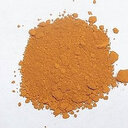Anticholinesterase and antioxidant investigations of crude extracts, subsequent fractions, saponins and flavonoids of atriplex laciniata L.: potential effectiveness in Alzheimer's and other neurological disorders.
Nyckelord
Abstrakt
BACKGROUND
Atriplex laciniata L. was investigated for phenolic, flavonoid contents, antioxidant, anticholinesterase activities, in an attempt to explore its effectiveness in Alzheimer's and other neurological disorders. Plant crude methanolic extract (Al.MeF), subsequent fractions; n-hexane (Al.HxF), chloroform (Al.CfF), ethyl acetate (Al.EaF), aqueous (Al.WtF), Saponins (Al.SPF) and Flavonoids (Al.FLVF) were investigated for DPPH, ABTS and H2O2 free radical scavenging activities. Further these extracts were subjected to acetylcholinesterase (AChE) & butyrylcholinesterase (BChE) inhibitory activities using Ellman's assay. Phenolic and Flavonoid contents were determined and expressed in mg Gallic acid GAE/g and Rutin RTE/g of samples respectively.
RESULTS
In DPPH free radicals scavenging assay, Al.FLVF, Al.SPF and Al.MeF showed highest activity causing 89.41 ± 0.55, 83.37 ± 0.34 and 83.37 ± 0.34% inhibition of free radicals respectively at 1 mg/mL concentration. IC50 for these fractions were 33, 83 and 82 μg/mL respectively. Similarly, plant extracts showed high ABTS scavenging potential, i.e. Al.FLVF (90.34 ± 0.55), Al.CfF (83.42 ± 0.57), Al.MeF (81.49 ± 0.60) with IC50 of 30, 190 and 70 μg/ml respectively. further, H2O2 percent scavenging was highly appraised in Al.FLVF (91.29 ± 0.53, IC50 75), Al.SPF (85.35 ± 0.61, IC50 70) and Al.EaF (83.48 ± 0.67, IC50 270 μg/mL). All fractions exhibited concentration dependent AChE inhibitory activity as; Al.FLVF, 88.31 ± 0.57 (IC50 70 μg/mL), Al.SPF, 84.36 ± 0.64 (IC50 90 μg/mL), Al.MeF, 78.65 ± 0.70 (IC50 280 μg/mL), Al.EaF, 77.45 ± 0.46 (IC50 270 μg/mL) and Al.WtF 72.44 ± 0.58 (IC50 263 μg/mL) at 1 mg/mL. Likewise the percent BChE inhibitory activity was most obvious in Al.FLVF 85.46 ± 0.62 (IC50 100 μg/mL), Al.CfF 83.49 ± 0.46 (IC50 160 μg/mL), Al.MeF 82.68 ± 0.60 (IC50 220 μg/mL) and Al.SPF 80.37 ± 0.54 (IC50 120 μg/mL).
CONCLUSIONS
These results stipulate that A. laciniata is enriched with phenolic and flavonoid contents that possess significant antioxidant and anticholinestrase effects. This provide pharmacological basis for the presence of compounds that may be effective in Alzheimer's and other neurological disorders.



